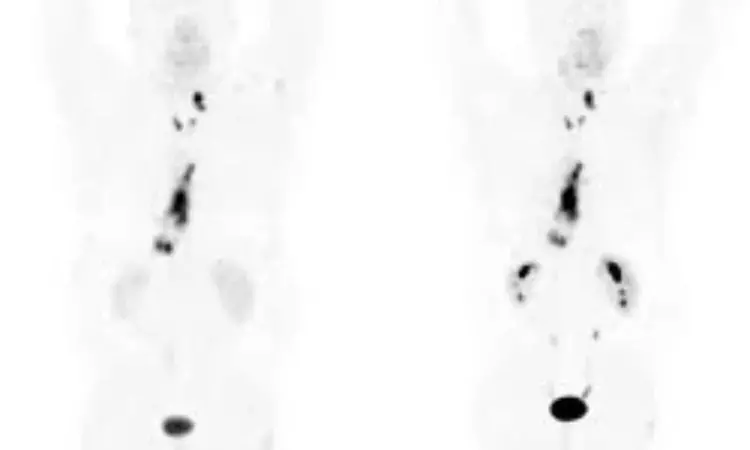- Home
- Medical news & Guidelines
- Anesthesiology
- Cardiology and CTVS
- Critical Care
- Dentistry
- Dermatology
- Diabetes and Endocrinology
- ENT
- Gastroenterology
- Medicine
- Nephrology
- Neurology
- Obstretics-Gynaecology
- Oncology
- Ophthalmology
- Orthopaedics
- Pediatrics-Neonatology
- Psychiatry
- Pulmonology
- Radiology
- Surgery
- Urology
- Laboratory Medicine
- Diet
- Nursing
- Paramedical
- Physiotherapy
- Health news
- Fact Check
- Bone Health Fact Check
- Brain Health Fact Check
- Cancer Related Fact Check
- Child Care Fact Check
- Dental and oral health fact check
- Diabetes and metabolic health fact check
- Diet and Nutrition Fact Check
- Eye and ENT Care Fact Check
- Fitness fact check
- Gut health fact check
- Heart health fact check
- Kidney health fact check
- Medical education fact check
- Men's health fact check
- Respiratory fact check
- Skin and hair care fact check
- Vaccine and Immunization fact check
- Women's health fact check
- AYUSH
- State News
- Andaman and Nicobar Islands
- Andhra Pradesh
- Arunachal Pradesh
- Assam
- Bihar
- Chandigarh
- Chattisgarh
- Dadra and Nagar Haveli
- Daman and Diu
- Delhi
- Goa
- Gujarat
- Haryana
- Himachal Pradesh
- Jammu & Kashmir
- Jharkhand
- Karnataka
- Kerala
- Ladakh
- Lakshadweep
- Madhya Pradesh
- Maharashtra
- Manipur
- Meghalaya
- Mizoram
- Nagaland
- Odisha
- Puducherry
- Punjab
- Rajasthan
- Sikkim
- Tamil Nadu
- Telangana
- Tripura
- Uttar Pradesh
- Uttrakhand
- West Bengal
- Medical Education
- Industry
PET imaging reliable for evaluating new cancer therapies: Study

USA: According to a recent study in the Journal of Nuclear Medicine, FAPi PET imaging of cancer patients with a gallium-68 (Ga-68) tracer may be a reliable way for evaluating new therapies.
According to results from the interim analysis of a prospective exploratory imaging trial, 68Ga-FAPi-46 PET biodistribution across multiple cancers strongly correlated with fibroblast activation protein (FAP) tissue expression. The findings support further investigation of FAPi PET as a pan-cancer imaging biomarker for FAP expression and stratification tool for FAP-targeted therapies.
FAP-expressing cancer-associated fibroblasts are known to promote metastasis and immunosuppression and confer treatment resistance. Radiolabeled molecules targeting FAP are being used as pan-cancer theranostic agents because FAP is overexpressed in many cancers.
Christine E. Mona, University of California Los Angeles, United States, and colleagues aimed to establish the spectrum of FAP expression across various cancers by immunohistochemistry and to explore whether gallium-68 FAPi-46 (68Ga-FAPi-46) PET biodistribution faithfully reflects FAP expression from resected cancer and non-cancer specimens.
For this purpose, the researchers conducted a FAP expression screening by using immunohistochemistry on a pan-cancer human tissue microarray (TMA) (141 patients, 14 different types of cancer) and an interim analysis of a prospective exploratory imaging trial in cancer patients.
Volunteer patients underwent one whole body 68Ga-FAPi-46 PET/CT scan and subsequently, surgical resection of their primary tumor and/or metastasis. 68Ga-FAPi-46 PET maximum standardized uptake value (SUVmax and SUVmean) was correlated with FAP immunohistochemistry score in cancer and non-cancer tissues for each patient.
Key findings include:
- FAP was expressed across all 14 cancers types on TMA with variable intensity and frequency, ranging from 25 to 100%.
- Strong FAP expression was observed in 50-100% of cancers of the bile duct, bladder, colon, esophagus, stomach, lung, oropharynx, ovary and pancreas.
- Fifteen patients with various cancer types (colorectal (n = 4), head and neck (n = 3), pancreas (n = 2), breast (n = 2), stomach (n = 1), esophagus (n = 2) and uterus (n = 1)) underwent surgery following their 68Ga-FAPi-46 PET/CT scan within a mean time interval of 16.1±14.4 days.
- 68Ga-FAPi-46 SUVs and immunohistochemistry scores were higher in cancer than in normal tissue: mean SUVmax 7.7 vs 1.6, mean SUVmean 6.2 vs 1.0 and mean FAP immunohistochemistry score 2.8 vs 0.9.
- FAP immunohistochemistry scores strongly correlated with 68Ga-FAPi 46 SUVmax and SUVmean: r=0.781 and r=0.783, respectively.
"These findings support further exploration of FAPi PET as a pan-cancer imaging biomarker for FAP expression and stratification tool for FAP- targeted therapies," the authors concluded.
Reference:
Correlation of 68Ga-FAPi-46 PET biodistribution with FAP expression by immunohistochemistry in patients with solid cancers: a prospective translational exploratory study. Christine E. Mona, Matthias R. Benz, Firas Hikmat, Tristan R. Grogan, Katharina Lückerath, Aria Razmaria, Rana Riahi, Roger Slavik, Mark D. Girgis, Giuseppe Carlucci, Kimberly A. Kelly, Samuel W French, Johannes Czernin, David W. Dawson, Jeremie Calais. Journal of Nuclear Medicine Nov 2021, jnumed.121.262426; DOI: 10.2967/jnumed.121.262426
Dr Kamal Kant Kohli-MBBS, DTCD- a chest specialist with more than 30 years of practice and a flair for writing clinical articles, Dr Kamal Kant Kohli joined Medical Dialogues as a Chief Editor of Medical News. Besides writing articles, as an editor, he proofreads and verifies all the medical content published on Medical Dialogues including those coming from journals, studies,medical conferences,guidelines etc. Email: drkohli@medicaldialogues.in. Contact no. 011-43720751


